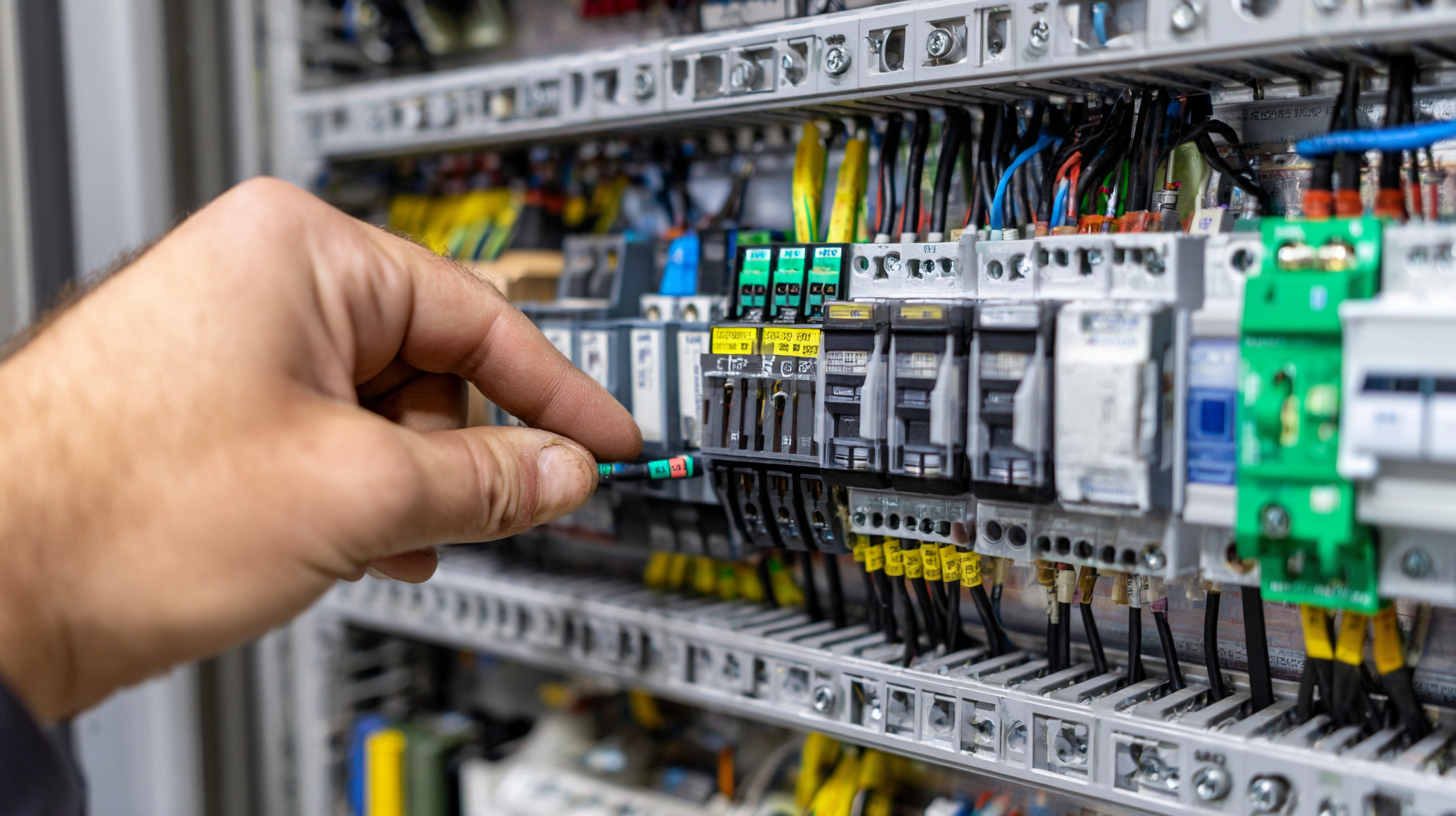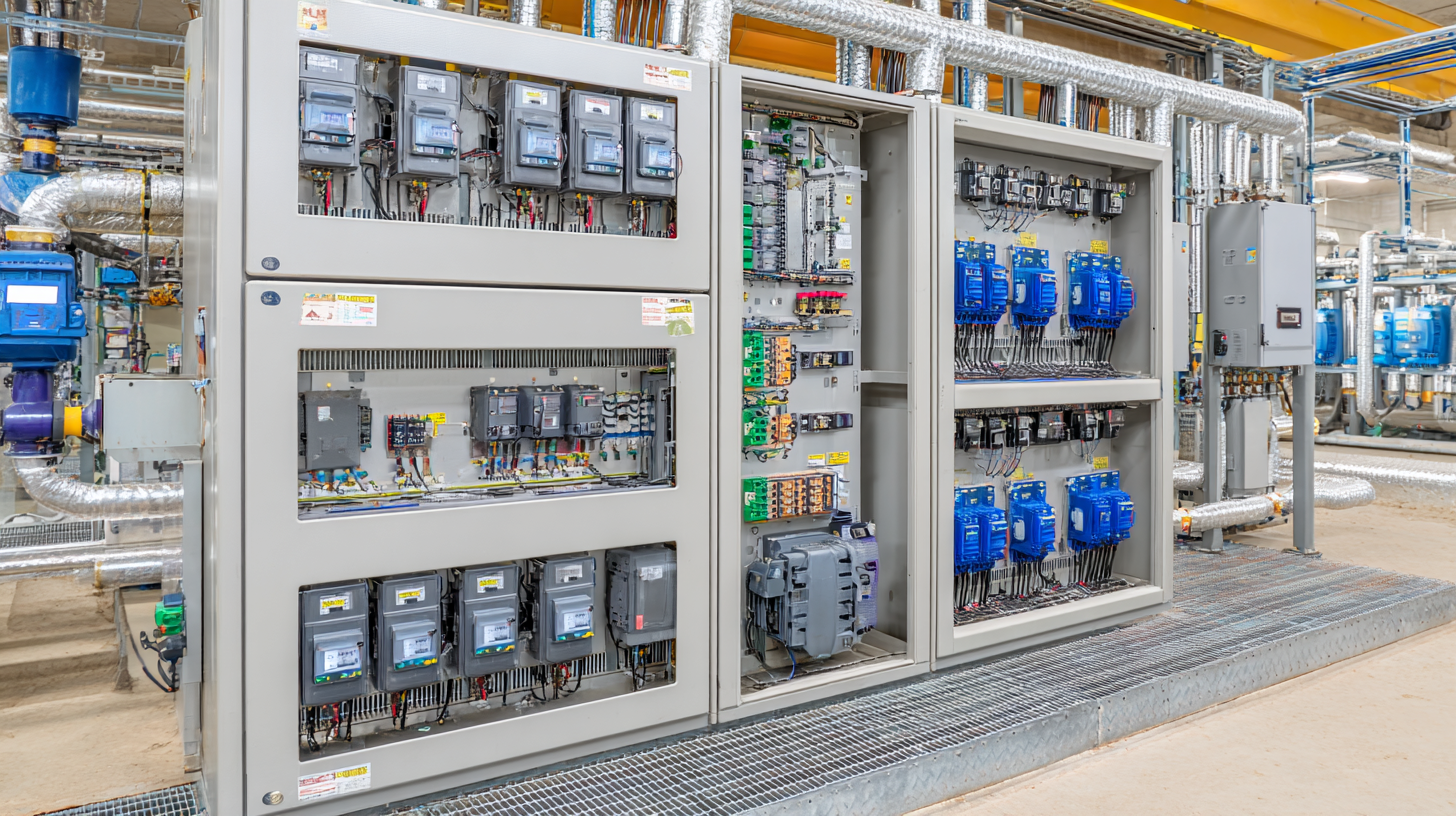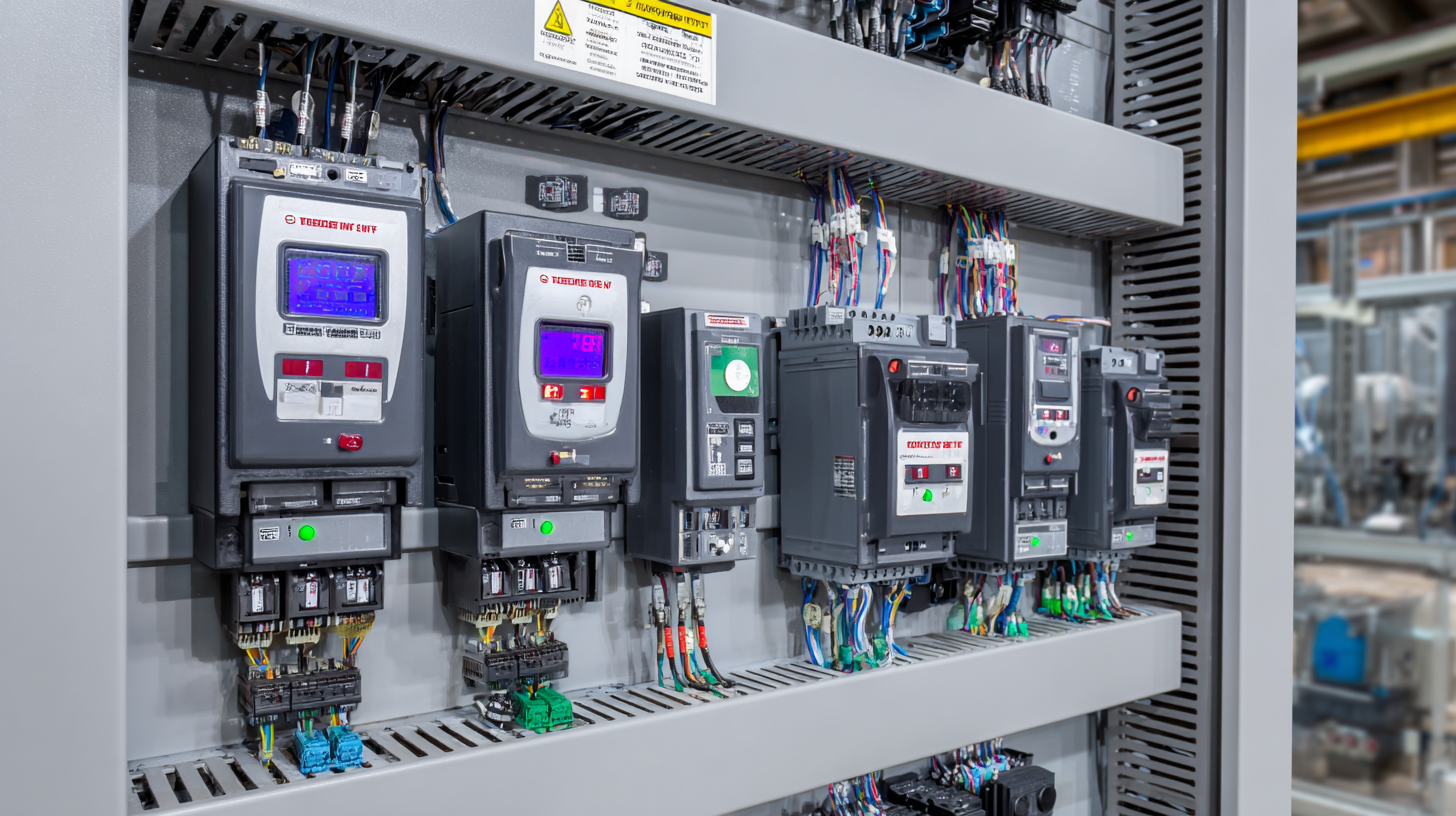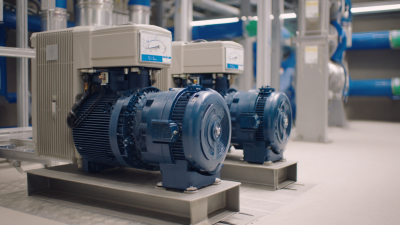Essential Checklist for Global Buyers When Selecting 2 Phase VFD Solutions
Table of Contents
- Key Factors in Choosing the Right 2 Phase VFD Solution
- Understanding Different Types of 2 Phase VFD Technologies
- Evaluating the Performance Metrics of VFD Solutions
- Cost Considerations for Global Buyers of 2 Phase VFDs
- Importance of Supplier Support and Warranty Options
- Compliance and Standards for 2 Phase VFD Systems in Global Markets
- FAQS
- Conclusion
- Related Posts
You know, in today’s fast-changing industrial world, it's pretty clear that using advanced control solutions is a must for companies that want to stay efficient and reliable. The global market for Variable Frequency Drives (VFDs) is expected to hit around USD 26 billion by 2025 — that’s a big shift toward systems that give businesses more flexibility in their operations. Among these, 2 Phase VFDs are really starting to catch on because they do a great job at optimizing motor control across different applications. That makes them a go-to choice, especially for industries really into automation.

Zhejiang Chuanken Electric Co., Ltd., with its 15 years of experience in industrial automation control products, is really leading the way in this technological shift. As companies around the world weigh their options, having a solid checklist for picking the right 2 Phase VFD solution is crucial. It helps them make smarter decisions that fit their operational needs and keep up with what the market demands.
Key Factors in Choosing the Right 2 Phase VFD Solution
When you're shopping around for a two-phase variable frequency drive (VFD), especially if you're a global buyer, there are a few key things you really should keep in mind. First off, it’s super important to look at the power rating and how efficient the VFD actually is. I mean, just last year, Mordor Intelligence pointed out that the worldwide VFD market is expected to hit around $18.4 billion by 2026. That just goes to show how much demand there is for energy-saving solutions in industrial automation these days. The right VFD isn’t just about matching the voltage and current your system needs—although that’s obviously important—it should also help cut down on energy costs over time, which is a total win.
Another big thing to consider is the control method the VFD uses. Some of the more advanced options, like vector control or direct torque control, can really make a difference when you need precise speed and torque management. According to Technavio, more companies are jumping on the smart drive bandwagon, and the market’s expected to grow at a pretty healthy CAGR of 7% over the next few years. Companies like Zhejiang Chuanken Electric Co., Ltd.—they’ve been in the game for 15 years—are all about mixing cutting-edge control tech into their VFDs, so you’re not just getting a basic unit, but one that offers good performance and top-notch reliability.
So, if you focus on energy efficiency and smart control features, you’ll be able to pick a two-phase VFD that not only does the trick now but also matches up with the bigger picture trend of smarter, more efficient industrial automation. It’s all about making a choice that’s both practical and future-proof, you know?
Essential Checklist for Global Buyers When Selecting 2 Phase VFD Solutions
This bar chart illustrates the key factors that global buyers consider when selecting 2 Phase VFD solutions, highlighting the importance of efficiency, cost, technological compatibility, and support services.
Understanding Different Types of 2 Phase VFD Technologies
When you're choosing a two-phase Variable Frequency Drive (VFD) setup, it’s pretty important to get a good grip on the different types of technologies out there, especially if you're shopping from around the globe. Basically, two main types of two-phase VFDs pop up: scalar control and vector control. Scalar control is the simpler, cheaper option — it just tweaks the voltage and frequency going to the motor in a straightforward way. It's usually good enough if you don’t need super precise control, so you'll see it used a lot in more basic industrial setups.
On the flip side, vector control VFDs are more advanced. They give you much finer control over how the motor performs — meaning you can tweak speed and torque more accurately and quickly. This leads to better efficiency and overall performance, especially in applications where precision really matters, like robotics or conveyor belts. Plus, because they’re smarter in managing energy and reducing machinery wear over time, investing in vector control drives can actually save you money and hassle long-term. Knowing the difference between these options helps buyers make smarter choices that really fit their specific needs and setups.
Evaluating the Performance Metrics of VFD Solutions
When you're choosing a 2-phase Variable Frequency Drive (VFD), it’s really important for buyers around the world to look at a few key performance factors. A recent report by MarketsandMarkets showed that the global VFD market is expected to grow from about $15.5 billion in 2020 to over $24 billion by 2025, which is a solid 9.3% compound annual growth rate. That kind of growth really highlights how crucial it is to pick high-quality VFDs that meet international standards and help cut down energy use.
Now, when evaluating VFD options, keep an eye on things like energy efficiency, harmonic distortion, and thermal performance. Energy efficiency is a big deal because a good VFD can cut energy consumption by anywhere from 20% all the way up to 50%, depending on what it’s used for. Also, harmonic distortion—usually measured as THD—should stay under 5%, so it doesn’t mess up your electrical system. And thermal performance is key too — overheating can cause serious issues or even equipment failure.
At Zhejiang Chuanken Electric Co., Ltd., we’ve been around for 15 years, making industrial automation control products that really hit those performance marks. Our goal is to help our customers get the most out of their systems — boosting efficiency and making things more reliable overall.

Cost Considerations for Global Buyers of 2 Phase VFDs
When you’re choosing two-phase Variable Frequency Drives (VFDs), especially in today’s super competitive market, it’s really important for global buyers to keep an eye on cost. As demand for more efficient machines keeps climbing, it’s not just about the initial price—you’ve also got to think about the total cost of ownership, or TCO. That means looking at everything from the upfront investment and installation costs to ongoing maintenance over time. Oh, and don’t forget to consider how much you could save on energy with a good VFD. Ideally, you want to find that sweet spot where the initial spending isn’t too high, but the long-term savings make up for it.
On top of that, since a lot of this is about cross-border buying, smooth logistics can make a real difference. Having a solid supply chain in place can cut down costs and get your VFDs delivered faster, which totally improves the whole buying experience. It’s a good idea to check out different suppliers—not just their prices but also how well their logistics work. That way, you’re making smarter decisions that match your budget and help keep things running smoothly. Bottom line? With some careful planning and a bit of research, you’ll be in a much better spot to grab the right VFD solutions and make everything work out well in the end.
Essential Checklist for Global Buyers When Selecting 2 Phase VFD Solutions - Cost Considerations for Global Buyers of 2 Phase VFDs
| Criteria | Considerations | Estimated Cost Range |
|---|---|---|
| Energy Efficiency | Evaluate the VFD's efficiency ratings and expected energy savings. | $1,000 - $5,000 |
| Installation Costs | Consider labor and materials for installing the VFD. | $500 - $2,000 |
| Maintenance | Factor in ongoing maintenance and repair costs over the lifespan of the VFD. | $100 - $1,000/year |
| Technical Support | Ensure adequate availability of technical support and service. | $200 - $1,500 |
| Quality and Reliability | Assess the reliability ratings and user reviews of VFD models. | N/A |
| Warranty Terms | Review warranty coverage length and conditions for the VFD. | N/A |
| Compatibility | Ensure VFD is compatible with existing systems and equipment. | N/A |
Importance of Supplier Support and Warranty Options
When you're in the market for a 2-phase VFD, one thing that often gets overlooked is just how important the supplier’s support and warranty options really are. In a world full of complex tech, having a supplier that’s quick to respond and offers solid support can make all the difference—especially when you’re trying to get everything up and running smoothly and keep things running afterward. It’s a good idea to look for suppliers who provide clear technical documentation, respond fast when you have questions, and offer assistance with troubleshooting. Trust me, this kind of support can save you a lot of headaches down the line and help you avoid costly downtime during installation and daily operation.
As for warranties, don’t underestimate their importance. Think of it like a warranty on a car—it's about peace of mind. A reliable warranty from your VFD supplier can really come in handy, especially if something goes wrong after the initial period. Be cautious about hidden costs—sometimes repairs and maintenance can rack up more than you expect once the warranty’s over. It’s worth carefully checking what’s actually covered, how long it lasts, and what kind of support you’ll get. A good warranty isn’t just a safety net; it’s an investment that helps protect your long-term goals and keeps unexpected expenses at bay. That way, your tech investment stays solid and really works for you, not against you.
Compliance and Standards for 2 Phase VFD Systems in Global Markets
When you're picking out two-phase VFDs for global markets, it's super important to make sure they comply with the right standards. Different parts of the world have their own rules about safety, efficiency, and how well the systems perform. So, it's a good idea for buyers to get familiar with international standards like IEC, UL, and ANSI. These guidelines aren't just bureaucratic hoops—they actually help make sure your VFDs not only work smoothly but also follow safety protocols for electrical gear. Meeting these standards also helps reduce liability risks and boosts customer confidence in your products.

Plus, understanding what’s required locally can make a big difference in choosing the right two-phase VFDs. For example, in Europe, having the CE mark is a must because it shows your product meets health, safety, and environmental standards. Over in North America, on the other hand, you’ll want to pay attention to NEMA ratings—they set the bar for design and performance. By keeping these compliance points in mind, global buyers can make smarter decisions that fit both the legal stuff and their own operational needs. In the end, this all helps ensure a smoother roll-out in different regions without a hitch.
FAQS
: The two main types of two-phase VFD technologies are scalar control and vector control.
Scalar control VFD is a simpler and less expensive option that adjusts the voltage and frequency supplied to the motor, suitable for applications where high precision is not critical.
Vector control VFD is used in applications that demand higher precision, such as robotics or conveyor systems.
Vector control VFDs provide enhanced efficiency, precise motor speed and torque control, energy savings, and reduced wear on machinery over time.
Energy efficiency is crucial because VFDs can reduce energy consumption by 20% to 50%, which helps optimize operational costs.
Harmonic distortion, or Total Harmonic Distortion (THD), should be below 5% to ensure minimal impact on the electrical system.
Thermal performance is essential to prevent overheating, which can lead to equipment failure and negatively impact the reliability of VFDs.
The global VFD market is projected to grow from $15.51 billion in 2020 to $24.08 billion by 2025, demonstrating a CAGR of 9.3%.
Selecting high-quality VFD solutions ensures adherence to international standards and optimizes energy consumption, which is vital for operational efficiency and reliability.
Zhejiang Chuanken Electric Co., Ltd. has 15 years of production history in delivering innovative industrial automation control products.
Conclusion
When you're trying to pick out a 2 Phase VFD solution, there are a few key things to keep in mind to make sure it works well and lasts in the long run. It’s really important to get familiar with the different types of 2 Phase VFD technologies out there because each one offers its own perks depending on what you need. Don't forget to look at performance factors like efficiency and how much load it can handle—you don’t want to overlook those. Oh, and of course, costs matter, but they shouldn’t be the only thing you’re thinking about. Consider the support from the supplier and warranty options too, since those can save you headaches later on.
Another big deal is making sure the system complies with international standards—this way, you know it’ll meet market requirements everywhere. Here at Zhejiang Chuanken Electric Co., Ltd., we’re proud to be a high-tech company with 15 years of experience in industrial automation control products. That means we understand the ins and outs, and we can help you find the perfect solution tailored to your specific needs, no matter where you are in the world.
Related Posts
-

Leading Global Factory for Best 2 Phase Vfd Solutions You Can Trust
-

How to Choose the Best 45kW VFD for Your Industrial Applications
-

Unlocking Efficiency with the Benefits of the Best Pressure Booster Vfd Technology
-

Future Innovations in Vfd Drive Power Boards for 2025 Tech Advancements
-

How to Navigate the 2025 Trends in Vfd Power Cable Selection for Global Buyers
-

Choose China’s Premier 250kw Soft Starters and Elevate Your Global Partnerships

